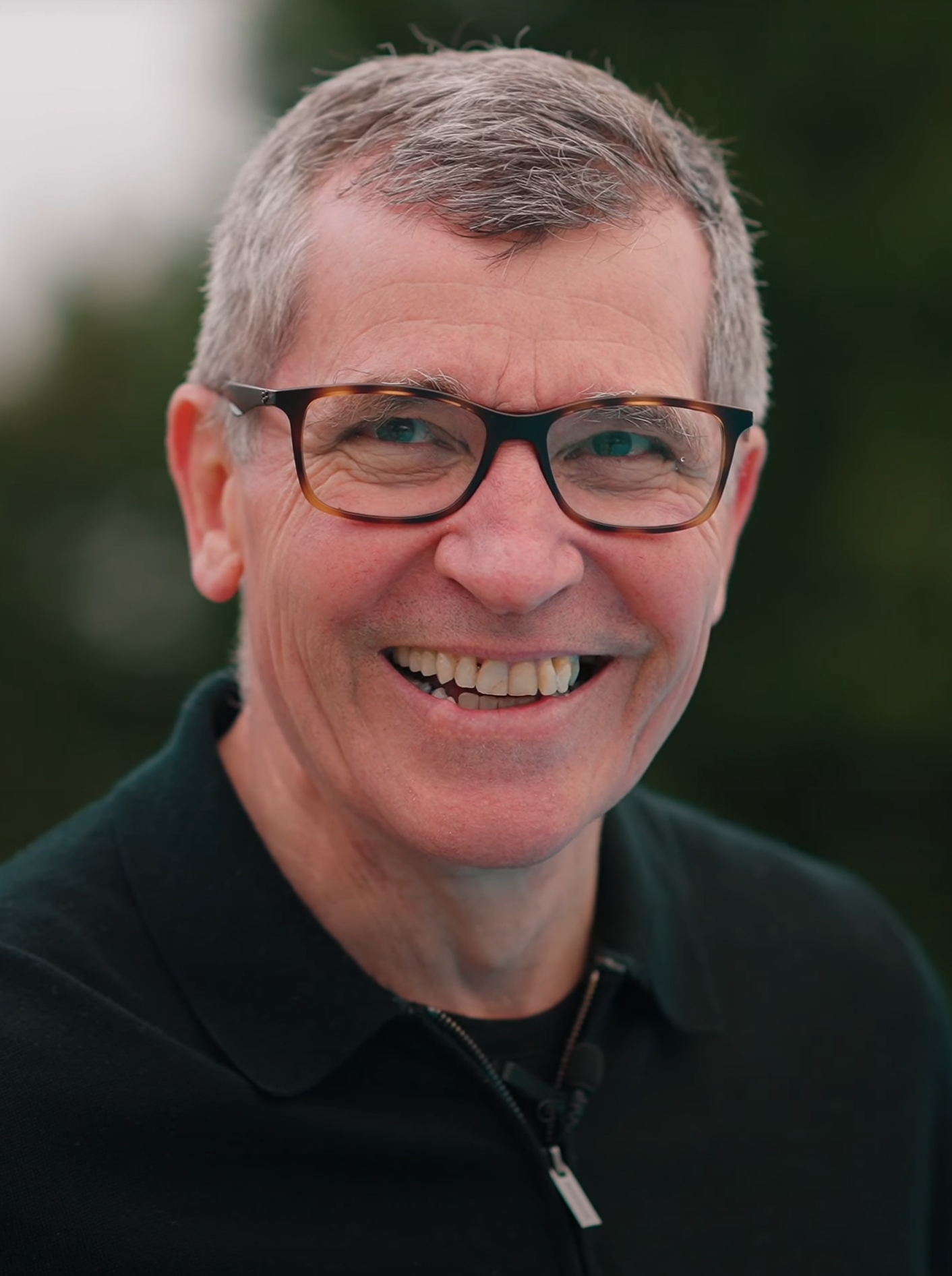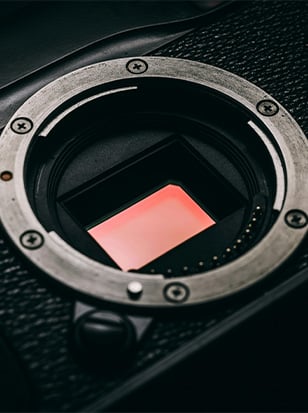
Eddie Keogh
- Job title: Sports Photographer
- Education: National Council for the Training of Journalists (NCTJ)
- Website: eddiekeogh.com
- Instagram: eddiekeoghphotos
- Related jobs: Photography assistant, event photographer, commercial photographer, product photographer
Eddie Keogh is a world-renowned sports photographer with over 30 years of experience. He has photographed sports of all kinds, all around the world, but his true love of photography stems from football.
While photographing for Getty Images, he’s reached what some would see as the pinnacle of a football photography career: becoming the official photographer for the England football team. But just one national team wouldn’t be enough, and Eddie also photographs for the England rugby team's official sponsor, O2.
We were lucky to have the chance to sit down with Eddie to talk to him about how his career came to be, the journey he’s been on and the advice he has for aspiring sports photographers.

Jonny Helm: When and how did your interest in photography first arise?
Eddie Keogh: I’ve always been interested in photography, even from an early age. As a kid, I got myself a summer job at Brent Council sweeping roads around Harlesden. It paid well and allowed me to save up to buy my first camera, and photography quickly became my hobby.
I used to bring the camera around with me on the job. I’d keep it in my wheelbarrow and whenever I met someone who looked interesting or I thought would make for a nice portrait, I'd stop them and ask them if I could take their picture. I wanted to learn as much as I could about my camera and I found particular enjoyment in photographing my brother playing football at the local park.
Later, I went to college in Sheffield for a year to study press photography and learned other skills, but sports was seemingly always on my mind. I knew that’s where my enjoyment of photography came from.
JH: Has football always been your speciality as a sports photographer?
EK: It’s been a long journey spanning nearly 40 years, and I've photographed an awful lot of football in that time. The thing is, as a sports photographer living in the UK, football is the biggest sport and if you are a sports photographer, you will likely photograph or will have photographed football at some stage.
But the job has changed massively from when I first started. When I started, sports photographers generally did everything. But over the years it has become much more specialised to the point that some photographers exclusively photograph a single sport. While I do photograph other sports, I love football and were I to start my journey now, I would probably be one of those specialised single-sport photographers.

JH: Could you tell us about how your career has developed? How did you get that first job?
EK: My course in Sheffield was at the National Council for the Training of Journalists (NCTJ). This was and is a prestigious establishment that opens up doors in all areas of journalism. As such, the tutors speak to various agencies that look for aspiring photographers. I was fortunate enough to be offered an interview with the Mercury Press Agency in Liverpool. I really wanted this job so when they asked if I could drive to photo locations, I said I could ride a motorbike.
This was a little white lie. I could ride a motorbike but I didn't have a licence. But I got the job and when I was pulled in one day and my manager said that he could have sworn I said that I could ride a motorbike, I said sorry, we had to sell it. And then they paid for my driving lessons.
So that was my first real photography job; at a press agency that supplied images to all the national newspapers. During that time, we photographed a bit of everything — news, sports and whatnot — but Liverpool is a football-mad city and photographing football at Anfield and Goodison Park was pretty special. I’d grown up photographing football at the local park – all of a sudden, I was at the top of the league. Fast-forward to now and my main job is photographing the England football team. I'm very proud of it and I would say it’s pretty much the pinnacle of my career.
JH: Were you making money from your photography before you went to Sheffield?
EK: I made a little. A friend from school, Bob Thomas Sports Photography, introduced me to the Daily Mirror sports photographer Monte Fresco who got me a gig taking football photos and would later help me get my feet off the ground.
It wasn’t so much a job but I would submit pictures to Millwall for their programme and they paid me some money for the images — something like 20 to 30 quid a game. Yeah, it wasn’t much but it was good to be taking photos that would be featured.
Monte also brought me into the Daily Mirror building and gave me a couple of second-hand cameras including a very old Nova Flex, which was fantastic. But what was more inspiring than the cameras was simply going into the Daily Mirror building.
It is funny, there are certain times in your life when you go: right, this is where I want to be. You can't underestimate inspiration and it’s for that reason that it’s important for people who are in the [photography] game to pass on that inspiration.

JH: Is there an industry-standard day rate or a starting rate for aspiring football photographers?
EK: When you’re starting, it is realistic not to expect much in the way of payment, especially in non-league football. There are a lot of people taking photos, particularly younger photographers who are all eager to be involved with clubs but are in a difficult negotiating position regarding payment.
Because of this, you should consider these initial opportunities as a starting point, whether they’re paid or not. Use these opportunities to develop your skills and as you improve, you’ll get to a point where clubs need your photos. Then, as you build a name for yourself, the scales can shift. You may need to negotiate with the club that you’re photographing and say: There’s another club offering me £50-£100 to photograph their games, can you beat that?
JH: Moving on from there, where would you look for your next step?
EK: It’s important to walk before you can run. Have patience as you build and share your portfolio. The passion needs to burn so bright that you’ll do anything to succeed. More often than not, as I did, you will need to get a part-time job to supplement your photography, i.e. buying cameras, lenses and other equipment. Opportunities at the top level are few and far between but persistence is key. Reach out to clubs and agencies.
It’s an exciting time for female photographers. Women’s football has exploded in popularity and as such, the industry wants to balance the playing field and move away from the heavily male-dominated business. If you’re a passionate female photographer, your time is now.

JH: What opportunities are there for commercial work with brands and sponsorships?
EK: It requires some luck. But the harder you work, the luckier you will be; therefore, more opportunities will be presented to you. This side of the business comes down to your work with clubs and being an opportunist. If a team you've been working with gets a sponsorship, you should speak to the team manager and ask to be put in touch with the sponsor. You can contact them and show them the photos of their product in action and if they like them, ask if there are any opportunities. Meet people and make connections, and your photography will speak for itself.
JH: Does that affect the photos you take?
EK: Yes, a hundred per cent. If they like what you do and then pay you to take photos of their product, you will inevitably take photos that specifically highlight the product. You’ll still photograph the game but will have a quota of product-based images to fill. Sports photographers invariably make more money with commercial work like this. I work for Getty Images and Getty Images wouldn't exist without all the commercial partners that photograph this way, as this is where a lot of money can be made.

JH: How do you stand out among other photographers at big sporting events?
EK: It’s all about timing. I was privileged to be asked to photograph the athletics for Reuters during the London Olympics. The hundred-metre sprint is one of the most anticipated Olympic events and in 2012, everyone wanted to see Usain Bolt. For that race, I was positioned at the start of the race, tasked to capture the classic image of runners bursting out of the blocks.
When working with an agency such as Reuters, you are given a job and they don’t care how you do it as long as you get the required shot. With this image, you want to capture a kind of stack of runners within the frame, and there’s pretty much only one position that you can achieve it with and very little space to accommodate more than three photographers. I arrived at seven in the morning and the race wasn't until nine that evening. Sure enough, a photographer from Sports Illustrated was already there. There were other races and opportunities throughout the day, but to get a shot like this, you have to put in the hours and own the job.
And just like that, a day of waiting is over — in a split second. I was shooting at 11fps and I only got two usable frames.
JH: And finally, can you tell us about a particularly memorable moment from early in your career?
EK: After my year working in Liverpool, I had an opportunity to work with a news and sports agency in London where I grew up. I took that opportunity and photographed a lot of sports, but mainly football. Months in, the boss saw that I was doing well and enjoying it, so he asked if I would go to the 1984 Los Angeles Olympics with him. That was my first big international event where I was on the same stage as the world's best sports photographers. During that trip, I had the defining moment of realisation that this was what I wanted to do with my life, and I haven’t stopped since.

About the Author
Leo White has been a member of the Wex Photo Video team since 2018, working in a variety of roles ranging from the contact centre to the product setup team. With both a photography BA and MA, Leo has a wealth of knowledge he's ready to share.







